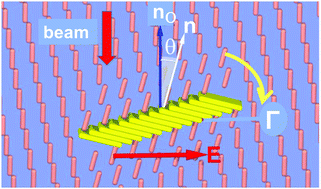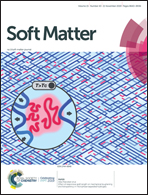Interaction of supramolecular aggregates and the enhanced optical torque on the director in a dye doped nematic liquid crystal
Abstract
There has been strong experimental evidence that molecules of some dyes in an anisotropic solvent, nematic liquid crystal, form aggregates. We present a detailed experimental analysis of the light-induced director reorientation (DR) in a dye-doped nematic liquid crystal (known as the Jánossy effect) and a theoretical model of its strong enhancement based on the aggregates' interaction. The DR transition is found to be very different from the Frederiks effect. If the light polarization is normal to the director, the transition is jump-like first order. Moreover, light polarization along the director also induces a DR which is a smooth second order transition with a very low threshold intensity. The theoretical model which explains these effects is based on the idea that dye molecules form rodlike supramolecular aggregates. The aggregates interact via the director distortions and their effective diameter gets certain field-dependence. As a result, the related entropy depletion depends on the light intensity and polarization and can be decreased by a certain DR along with the aggregate subsystem. This entropy gain is proportional to the square of light intensity which is a two-photon effect: the first resonance photon excites the dye molecule and the second photon polarizes the aggregate. This is in line with the experimental dependence of the critical intensity on the sample thickness. A special experiment shows that the effect is not connected with a possible heat-induced isotropic phase and hydrodynamic motion.



 Please wait while we load your content...
Please wait while we load your content...